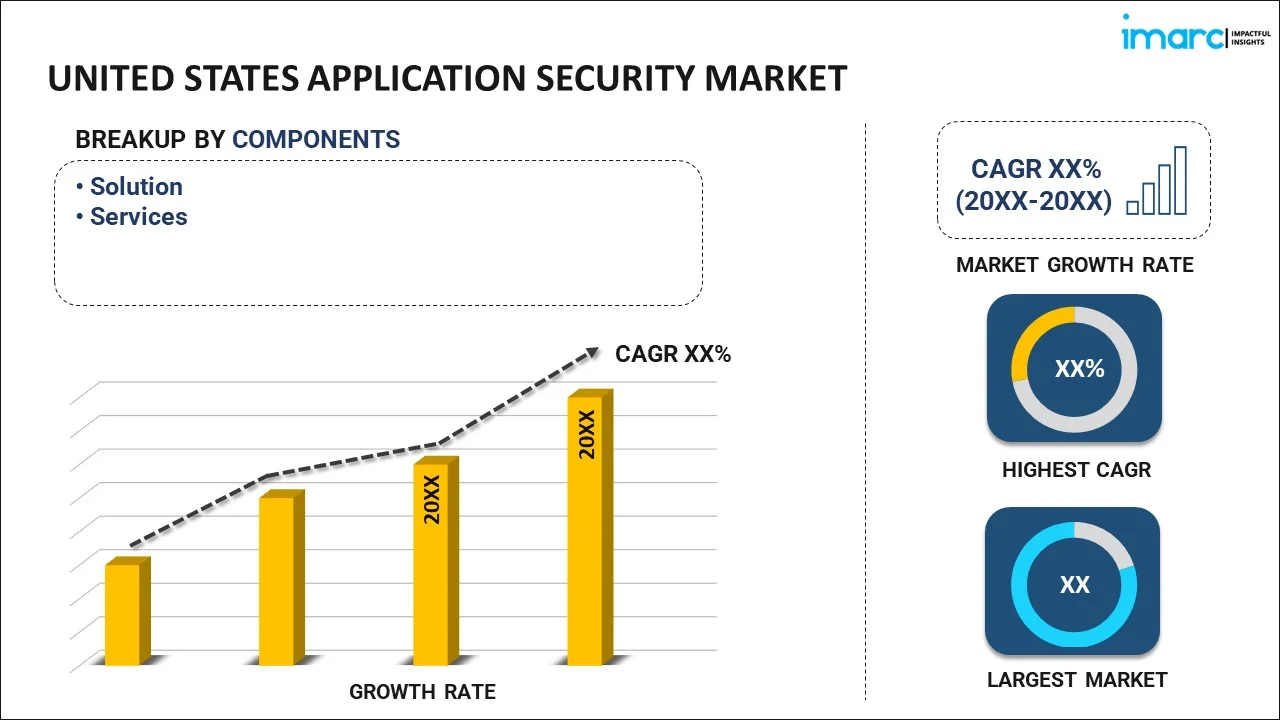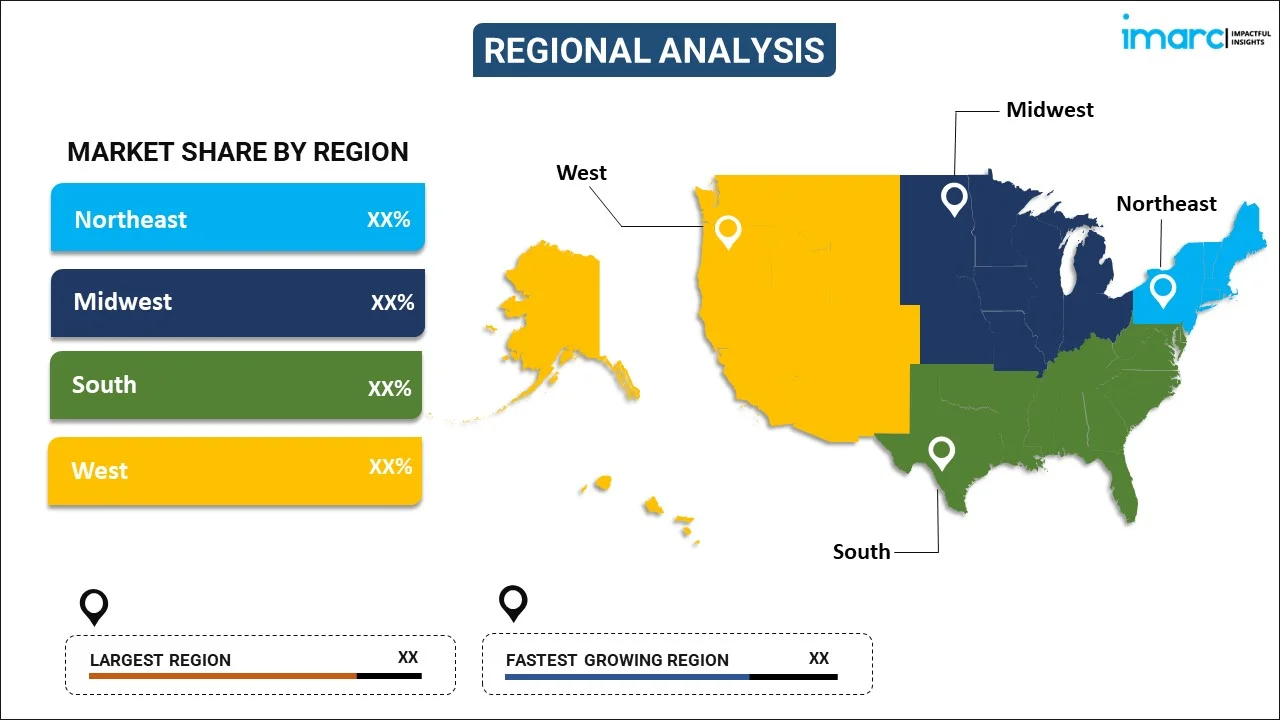
United States Application Security Market Report by Component (Solution, Services), Type (Web Application Security, Mobile Application Security), Testing Type (Static Application Security Testing (SAST), Dynamic Application Security Testing (DAST), Interactive Application Security Testing (IAST), Runtime Application Self-Protection (RASP)), Deployment Mode (On-premises, Cloud-based), Organization Size (Large Enterprises, Small and Medium-sized Enterprises), Industry Vertical (BFSI, Healthcare, IT and Telecom, Manufacturing, Government and Public Sector, Retail and E-Commerce, and Others), and Region 2025-2033
Market Overview:
United States application security market size is projected to exhibit a growth rate (CAGR) of 12.64% during 2025-2033. The growing focus of government bodies on strengthening cybersecurity and extensive investments in the IT infrastructures represent some of the key factors driving the market.
|
Report Attribute
|
Key Statistics
|
|---|---|
|
Base Year
|
2024 |
|
Forecast Years
|
2025-2033 |
|
Historical Years
|
2019-2024
|
| Market Growth Rate (2025-2033) | 12.64% |
Application security involves the process of developing, incorporating, and assessing the components within different applications to prevent security vulnerabilities. It encompasses protective layers like authentication, authorization, encryption, and logging, serving as safeguards against unauthorized access, unauthorized modifications, and potential irregular activities by third parties. This comprehensive approach aids enterprises in securing client data effectively, streamlining workflow processes, and ensuring the overall security of the application lifecycle. Presently, commercial solutions are available in diverse testing types, including runtime application self-protection (RASP), interactive application security testing (IAST), and dynamic application security testing (DAST).
United States Application Security Market Trends:
The United States application security market is fueled by the elevating adoption of durable, flexible, and cost-effective security solutions across various industrial verticals, such as telecommunications, e-commerce, banking, financing, serving and insurance (BFSI), information technology (IT), etc. Moreover, the growing instances of numerous online fraudulent activities is acting as another significant growth-inducing factor. This is also supported by various favorable policies undertaken by the government bodies across the United States for strengthening cybersecurity through the incorporation of security identifiers (IDs) for identifying users. Apart from this, the sudden deployment of bring your own device (BYOD) corporate model and work from home (WFH) setup, on account of the implementation of mandatory lockdowns has further increased the risks of data vulnerability. This, in turn, is positively influencing the regional market. Additionally, the inflating need for determining each phase of the software development lifecycle (SDLC) for protecting software and critical data is bolstering the market growth across the country. Besides this, the widespread utilization of smart and personal devices, including laptops, tablets, smartphones, and smart wearables, for accessing numerous applications and organization information is anticipated to create a positive outlook for the market across the United States over the forecasted period.
United States Application Security Market Segmentation:
IMARC Group provides an analysis of the key trends in each segment of the market, along with forecasts at the country level for 2025-2033. our report has categorized the market based on component, type, testing type, deployment mode, organization size, and industry vertical.
Component Insights:

- Solution
- Services
The report has provided a detailed breakup and analysis of the market based on the component. This includes solution and services.
Type Insights:
- Web Application Security
- Mobile Application Security
A detailed breakup and analysis of the market based on the type have also been provided in the report. This includes web application security and mobile application security.
Testing Type Insights:
- Static Application Security Testing (SAST)
- Dynamic Application Security Testing (DAST)
- Interactive Application Security Testing (IAST)
- Runtime Application Self-Protection (RASP)
The report has provided a detailed breakup and analysis of the market based on the testing type. This includes static application security testing (SAST), dynamic application security testing (DAST), interactive application security testing (IAST), and runtime application self-protection (RASP).
Deployment Mode Insights:
- On-premises
- Cloud-based
A detailed breakup and analysis of the market based on the deployment mode have also been provided in the report. This includes on-premises and cloud-based.
Organization Size Insights:
- Large Enterprises
- Small and Medium-sized Enterprises
The report has provided a detailed breakup and analysis of the market based on organization size. This includes large enterprises and small and medium-sized enterprises.
Industry Vertical Insights:
- BFSI
- Healthcare
- IT and Telecom
- Manufacturing
- Government and Public Sector
- Retail and E-Commerce
- Others
A detailed breakup and analysis of the market based on the industry vertical have also been provided in the report. This includes BFSI, healthcare, it and telecom, manufacturing, government and public sector, retail and E-commerce, and others.
Regional Insights:

- Northeast
- Midwest
- South
- West
The report has also provided a comprehensive analysis of all the major regional markets, which include Northeast, Midwest, South, and West.
Competitive Landscape:
The market research report has also provided a comprehensive analysis of the competitive landscape. Competitive analysis such as market structure, key player positioning, top winning strategies, competitive dashboard, and company evaluation quadrant has been covered in the report. Also, detailed profiles of all major companies have been provided.
United States Application Security Market Report Coverage:
| Report Features | Details |
|---|---|
| Base Year of the Analysis | 2024 |
| Historical Period | 2019-2024 |
| Forecast Period | 2025-2033 |
| Units | Billion USD |
| Scope of the Report | Exploration of Historical and Forecast Trends, Industry Catalysts and Challenges, Segment-Wise Historical and Predictive Market Assessment:
|
| Components Covered | Solution, Services |
| Types Covered | Web Application Security, Mobile Application Security |
| Testing Types Covered | Static Application Security Testing (SAST), Dynamic Application Security Testing (DAST), Interactive Application Security Testing (IAST), Runtime Application Self-Protection (RASP) |
| Deployment Modes Covered | On-premises, Cloud-based |
| Organization Sizes Covered | Large Enterprises, Small and Medium-sized Enterprises |
| Industry Verticals Covered | BFSI, Healthcare, IT and Telecom, Manufacturing, Government and Public Sector, Retail and E-Commerce, Others |
| Regions Covered | Northeast, Midwest, South, West |
| Customization Scope | 10% Free Customization |
| Post-Sale Analyst Support | 10-12 Weeks |
| Delivery Format | PDF and Excel through Email (We can also provide the editable version of the report in PPT/Word format on special request) |
Key Questions Answered in This Report:
- How has the United States application security market performed so far and how will it perform in the coming years?
- What has been the impact of COVID-19 on the United States application security market?
- What is the breakup of the United States application security market on the basis of component?
- What is the breakup of the United States application security market on the basis of type?
- What is the breakup of the United States application security market on the basis of testing type?
- What is the breakup of the United States application security market on the basis of deployment mode?
- What is the breakup of the United States application security market on the basis of organization size?
- What is the breakup of the United States application security market on the basis of industry vertical?
- What are the various stages in the value chain of the United States application security market?
- What are the key driving factors and challenges in the United States application security?
- What is the structure of the United States application security market and who are the key players?
- What is the degree of competition in the United States application security market?
Key Benefits for Stakeholders:
- IMARC’s industry report offers a comprehensive quantitative analysis of various market segments, historical and current market trends, market forecasts, and dynamics of the United States application security market from 2019-2033.
- The research report provides the latest information on the market drivers, challenges, and opportunities in the United States application security market.
- Porter's five forces analysis assist stakeholders in assessing the impact of new entrants, competitive rivalry, supplier power, buyer power, and the threat of substitution. It helps stakeholders to analyze the level of competition within the United States application security industry and its attractiveness.
- Competitive landscape allows stakeholders to understand their competitive environment and provides an insight into the current positions of key players in the market.
Need more help?
- Speak to our experienced analysts for insights on the current market scenarios.
- Include additional segments and countries to customize the report as per your requirement.
- Gain an unparalleled competitive advantage in your domain by understanding how to utilize the report and positively impacting your operations and revenue.
- For further assistance, please connect with our analysts.
 Inquire Before Buying
Inquire Before Buying
 Speak to an Analyst
Speak to an Analyst
 Request Brochure
Request Brochure
 Request Customization
Request Customization




.webp)




.webp)












